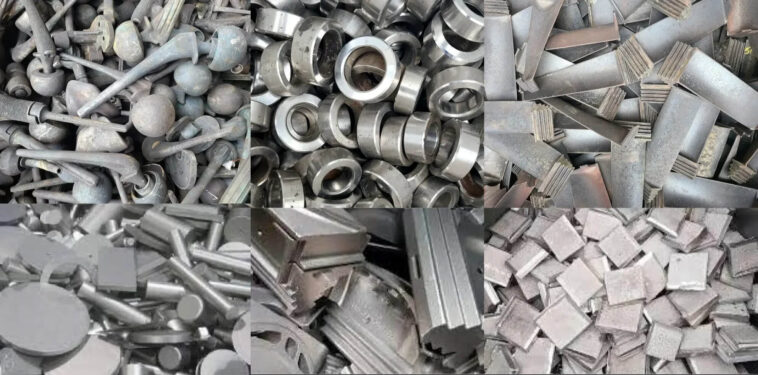Inconel 625 is a nickel-chromium superalloy widely known for its outstanding strength, resistance to oxidation, and corrosion in extreme environments. Developed in the 1960s, this alloy has become a crucial material in industries ranging from aerospace to chemical processing. Due to its exceptional properties, Inconel 625 is also highly sought after in the metal recycling industry, with scrap material playing a vital role in reducing waste and preserving natural resources. This article explores the significance of Inconel 625 scrap, its recycling potential, and its economic impact.
Properties and Composition of Inconel 625
Inconel 625 is an alloy primarily composed of nickel (58% minimum), chromium (20-23%), molybdenum (8-10%), and niobium (3-4%). These elements, along with trace amounts of iron, carbon, and silicon, give the material its superior mechanical strength and thermal stability. The alloy’s ability to maintain integrity under extreme temperatures, up to 980°C (1800°F), makes it a popular choice for harsh environments such as offshore drilling, gas turbines, and heat exchangers.
Uses and Applications of Inconel 625
Inconel 625 is widely used in a variety of industries due to its resistance to chemical degradation and heat. Its main applications include:
- Aerospace: Components for jet engines, exhaust systems, and turbine seals.
- Marine Engineering: Parts in saltwater environments where corrosion resistance is essential.
- Chemical Processing: Equipment for handling highly corrosive materials like acids.
- Nuclear and Power Generation: Used in reactor cores, steam generators, and heat recovery systems.
Given these demanding applications, Inconel 625 is often replaced or discarded as parts wear out, creating a steady stream of scrap material.
Recycling of Inconel 625 Scrap
Recycling Inconel 625 scrap is a highly efficient way of reusing valuable metals, especially nickel and chromium. The recycling process typically involves:
- Collection and Sorting: Scrap Inconel 625 is collected from industrial sources, often in the form of used machinery parts, offcuts from manufacturing, or defective components. It is then sorted to remove contaminants such as oil, dirt, and other metals.
- Melting and Refining: The scrap is melted in a vacuum or an inert atmosphere to prevent contamination during the recycling process. Advanced refining techniques are used to maintain the purity of the alloy.
- Recasting and Forming: Once the alloy is purified, it is recast into new forms such as bars, plates, or rods, which can then be used in manufacturing.
The recycling process not only conserves resources but also significantly reduces the environmental impact of mining and metal production. Nickel mining, in particular, is energy-intensive and generates large amounts of waste. By recycling Inconel 625, industries can reduce the demand for newly mined nickel, chromium, and molybdenum, cutting down greenhouse gas emissions and the environmental footprint of metal production.
Economic Impact of Inconel 625 Scrap
The value of Inconel 625 scrap is primarily driven by the high price of nickel, one of its main components. Market fluctuations in nickel prices, often influenced by global supply and demand, can directly impact the price of scrap. In general, clean, uncontaminated Inconel 625 scrap fetches a high price in the recycling market. As industries increasingly seek sustainable materials, demand for high-quality scrap metals has grown, providing economic incentives for recycling programs.
In addition to environmental benefits, Inconel 625 scrap contributes to cost savings in manufacturing. Since recycled metal is often cheaper than newly produced material, manufacturers that utilize recycled Inconel 625 can reduce production costs while still benefiting from the alloy’s unique properties.
Challenges in Inconel 625 Scrap Recycling
Despite the numerous advantages, there are challenges in recycling Inconel 625 scrap. These include:
- Contamination: Scrap material must be thoroughly cleaned and sorted, as contamination with other metals or substances can reduce the quality of the recycled alloy.
- Technological Requirements: The recycling process requires sophisticated technology to maintain the alloy’s composition and performance characteristics.
- Market Volatility: Prices for nickel and other metals in Inconel 625 can fluctuate, affecting the profitability of recycling operations.
Future Outlook for Inconel 625 Scrap Recycling
The future of Inconel 625 scrap recycling is promising, especially as industries continue to move toward more sustainable practices. With advancements in recycling technologies, the process is becoming more efficient and cost-effective. Additionally, global efforts to reduce carbon emissions and conserve natural resources are likely to drive further demand for recycled superalloys like Inconel 625.
As the global demand for high-performance materials continues to grow, Inconel 625 scrap will remain a valuable resource. Its role in reducing the need for newly mined metals, combined with the economic benefits of recycling, underscores the importance of continued investment in recycling infrastructure and technologies.
This post was created with our nice and easy submission form. Create your post!





